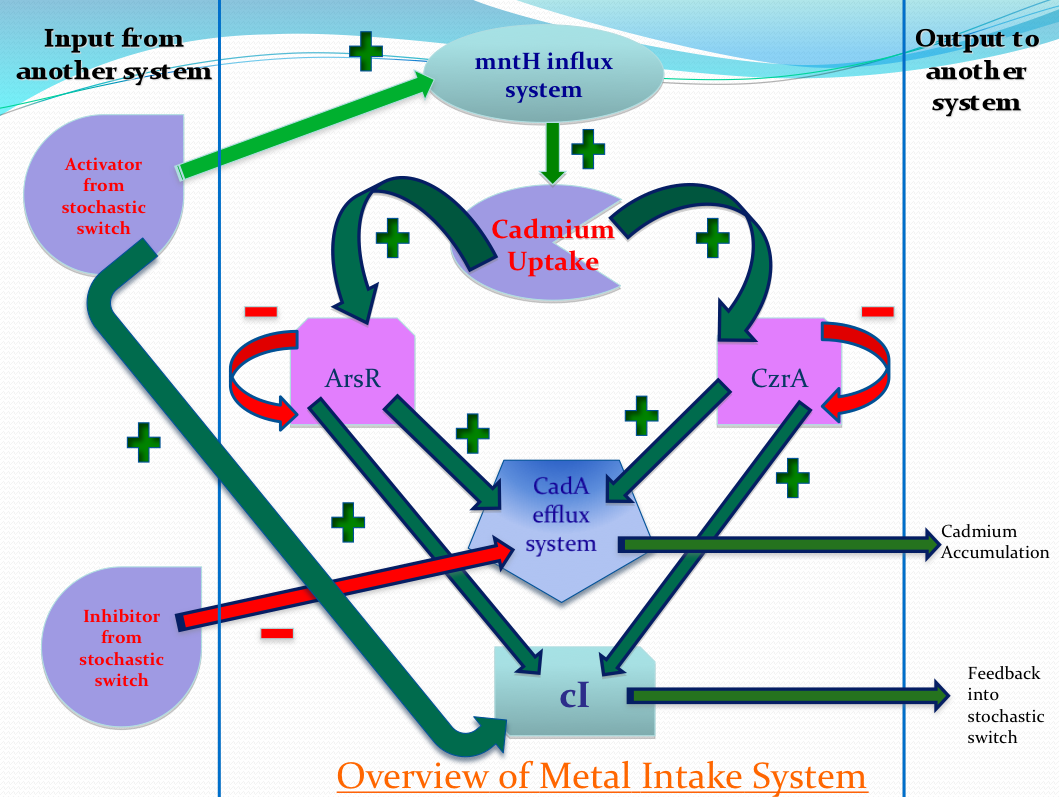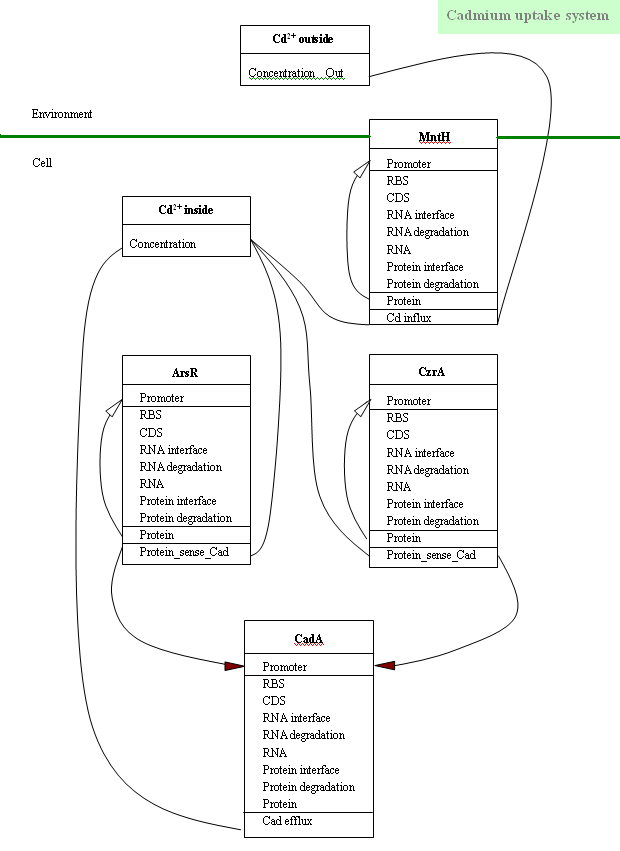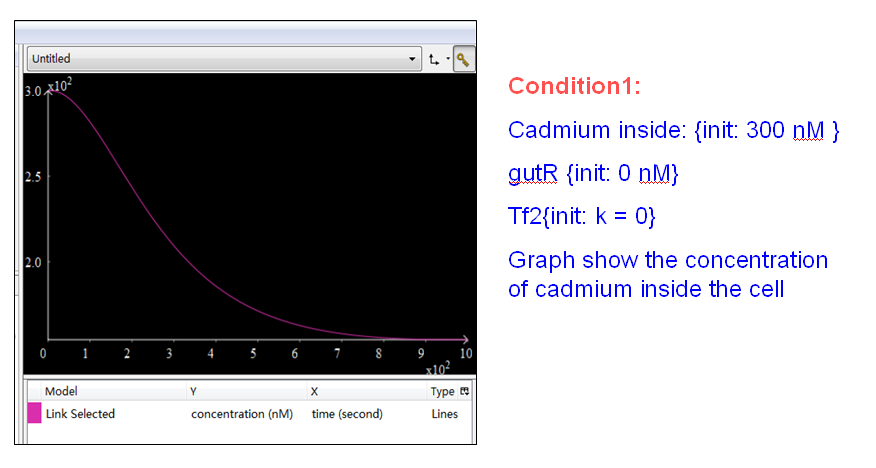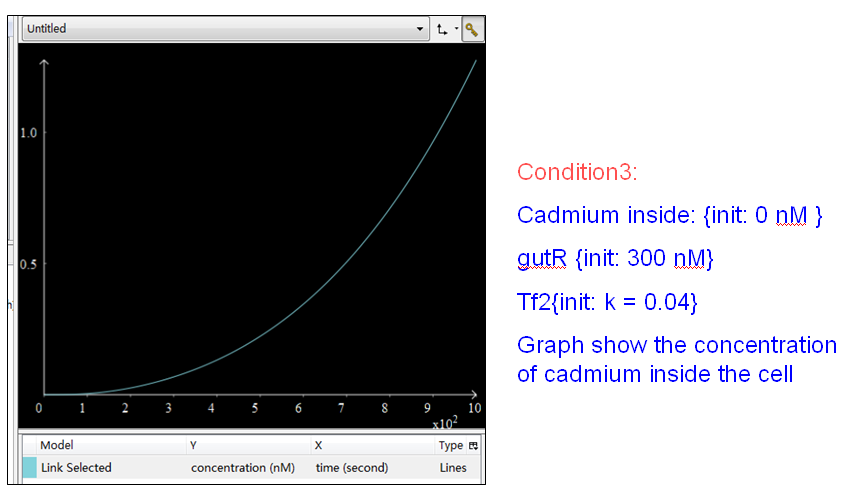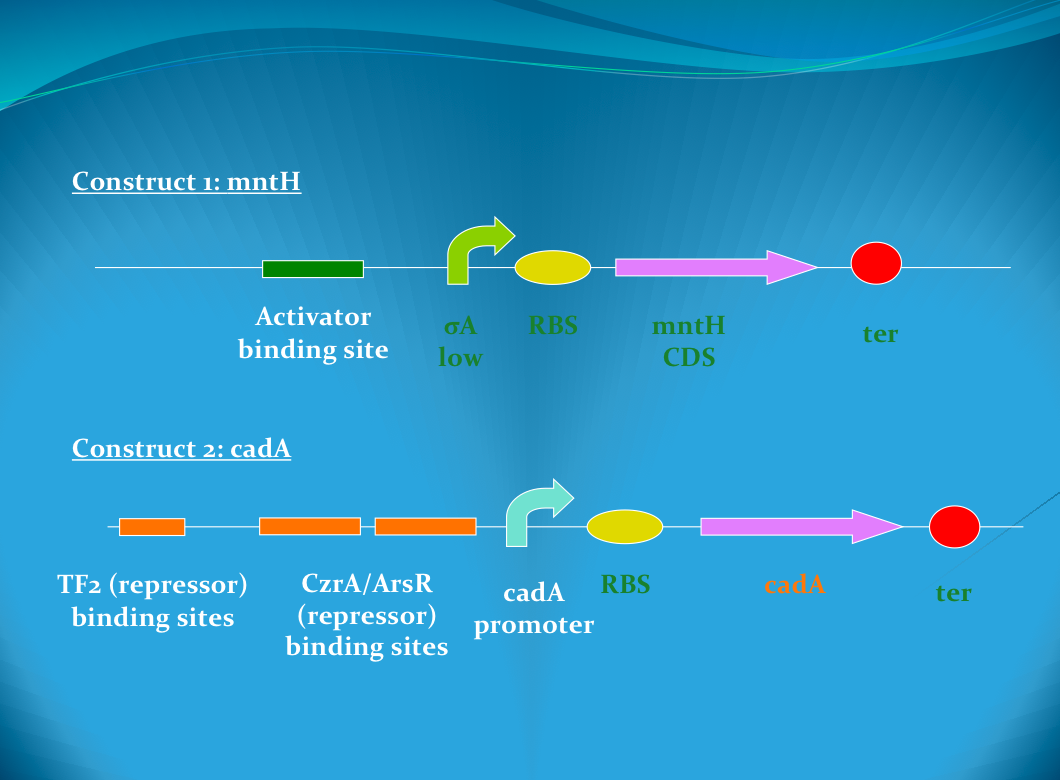Team:Newcastle/Metalintakeefflux
From 2009.igem.org
Babyneurone (Talk | contribs) (→Introduction) |
Babyneurone (Talk | contribs) (→Introduction) |
||
| Line 7: | Line 7: | ||
==Introduction== | ==Introduction== | ||
| - | The first step in our | + | The first step in our project would be to uptake the heavy metal cadmium ad cadmium only. Therefore it would be logical to find a way in which we can increase the intake of cadmium without increasing the intake of other metals too. |
It is known that a Bacillus subtilis cell (from the 168 strain) takes up cadmium naturally through the manganese transport system (Laddaga. R.A., Bessen. R., Silver. S.; 1985). Additionally it has been demonstrated that mutations to the manganese transport system can affect its ability to uptake cadmium without affecting its ability to transport manganese (Zeigler. D.R., et al; 1987). | It is known that a Bacillus subtilis cell (from the 168 strain) takes up cadmium naturally through the manganese transport system (Laddaga. R.A., Bessen. R., Silver. S.; 1985). Additionally it has been demonstrated that mutations to the manganese transport system can affect its ability to uptake cadmium without affecting its ability to transport manganese (Zeigler. D.R., et al; 1987). | ||
Revision as of 17:59, 21 October 2009
Metal Intake/Efflux
Introduction
The first step in our project would be to uptake the heavy metal cadmium ad cadmium only. Therefore it would be logical to find a way in which we can increase the intake of cadmium without increasing the intake of other metals too.
It is known that a Bacillus subtilis cell (from the 168 strain) takes up cadmium naturally through the manganese transport system (Laddaga. R.A., Bessen. R., Silver. S.; 1985). Additionally it has been demonstrated that mutations to the manganese transport system can affect its ability to uptake cadmium without affecting its ability to transport manganese (Zeigler. D.R., et al; 1987).
The manganese ion channel that we intend to either upregulate or control is the mntH ion channel (also goes under the name ydaR). mntH is part of the Nramp family of proton-coupled, metal ion transporters (Que. Q., Helmann. J.D.; 2000). It is also classified as a secondary transporter (Membrane Transport website).
It is also known that mntH is regulated negatively by increasing manganese ion concentrations. This is allowed to happen through the promoter called mntR (Que. Q., Helmann. J.D.; 2000). This means that B.subtilis has the ability to limit the manganese metal intake system when the intracellular concentrations of Mn+ starts to near cytotoxic levels.
The cadA efflux system. In B. Subtilis cation efflux is by an antiporter. Cd, Co, Zn are pumped out by ATPase dependant systems of the CDF family.
Modelling
- In normal time without any input from other systems, this is how the metal influx/efflux system works:
- When the stochastic switch is giving feedback from it's metal container decision, this is how the system is engineered to work:
- Here are some graphs which the produced by our cellML model
BioBrick constructs
Lab Work Strategies
Other Presentations and Diagrams
News
Events
- 20 – 21 June 2009 - Europe workshop (London)
- 23 – 24 June 2009 - UK iGEM meetup (Edinburgh)
- 23 October Practice Presentation (Newcastle)
- 23 October T-shirts are ready
- 27 October Practice Presentation (Sunderland)
- 27 October Poster is ready
- 30 October – 2 November 2009 - Jamboree (Boston)
Social Net
 "
"


